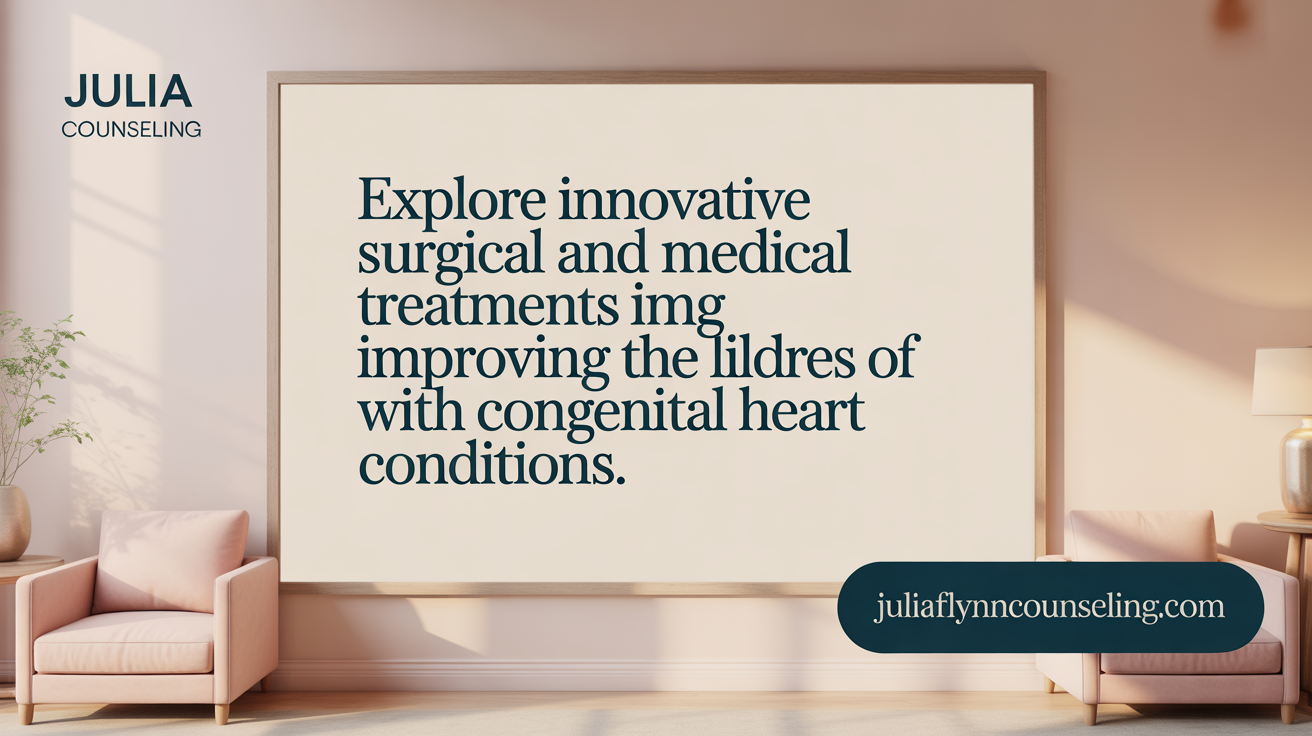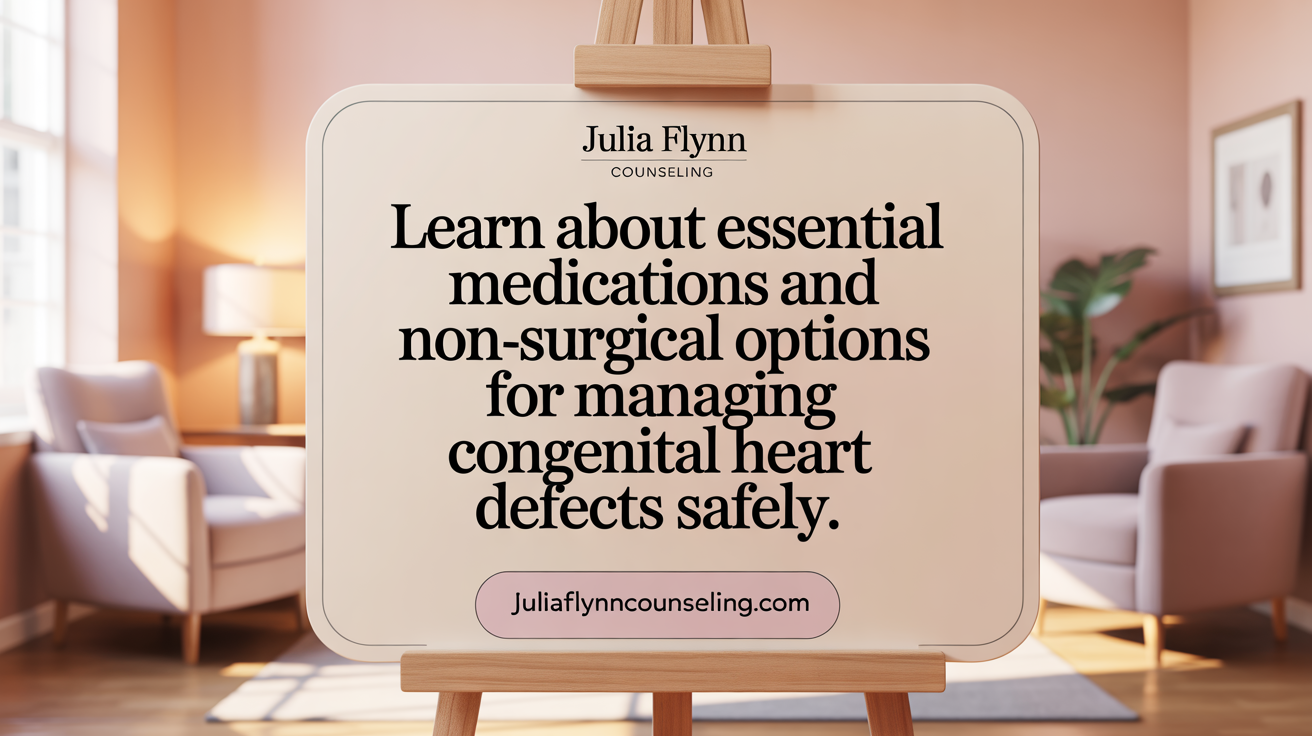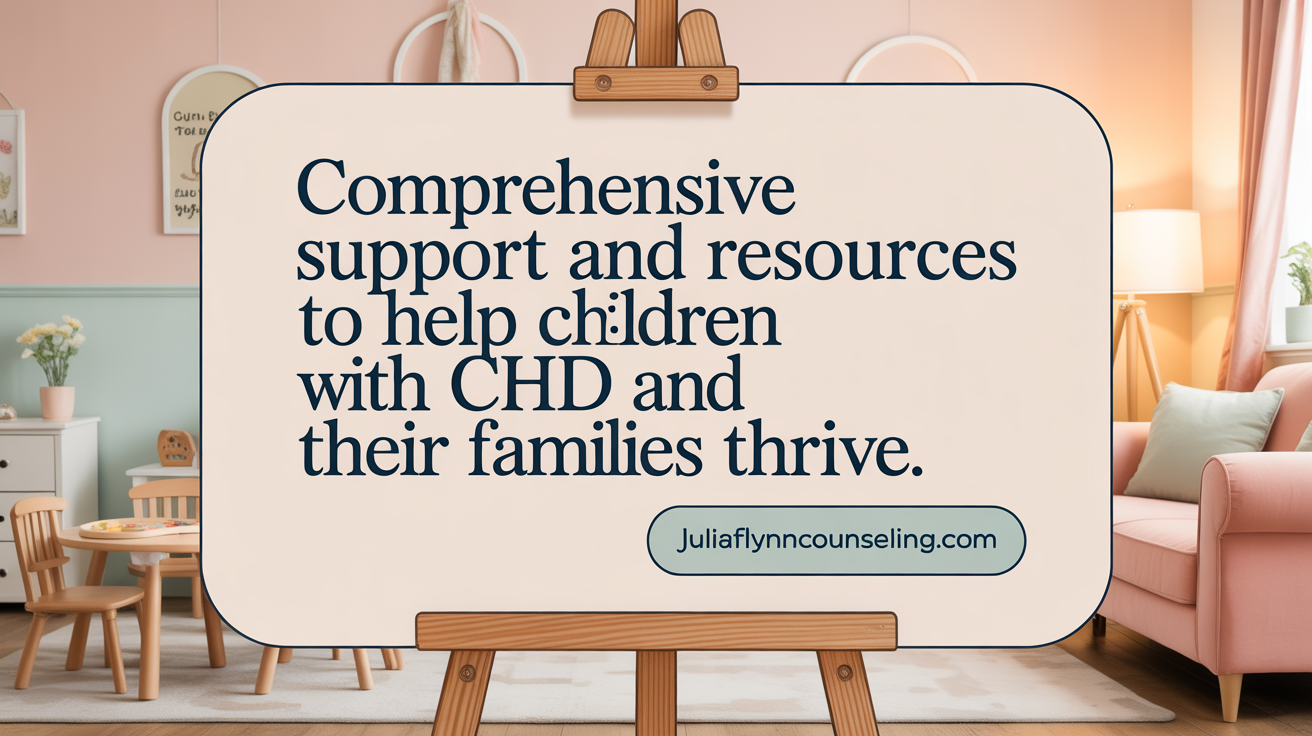Understanding Congenital Heart Conditions in Youth
Congenital heart defects (CHD) represent the most common birth defects globally, affecting structural heart development before birth. These conditions vary widely in severity, type, and clinical impact, ranging from minor anomalies requiring periodic observation to complex defects necessitating immediate surgical intervention. Advances in diagnosis and treatment have dramatically improved outcomes, enabling many affected children to live into adulthood. This article explores the multifaceted treatment options for congenital heart conditions in youth, addressing surgical and non-surgical interventions, medical management, long-term care, and supportive resources for patients and caregivers.
Causes, Types, and Early Diagnosis of Congenital Heart Defects
What are the causes and types of congenital heart defects?
Congenital heart defects (CHD) are structural abnormalities of the heart present from birth. They result from disruptions in the normal development of the heart during early pregnancy, especially within the first six weeks when the heart forms. These defects can be caused by genetic factors, such as chromosomal disorders like Down syndrome or mutations in specific genes. Environmental influences during pregnancy also play a significant role, including maternal diabetes, rubella infection, alcohol use, smoking, and exposure to certain medicines or organic solvents.
The types of CHD are varied and include conditions such as atrial septal defect, ventricular septal defect, patent ductus arteriosus, tetralogy of Fallot, transposition of the great arteries, and issues with heart valves. Many of these involve abnormal blood flow, either too much or too little, due to malformations in the heart’s structures. These problems can strain the heart and lungs, affecting overall health. Though the exact causes are often unknown, ongoing research has led to improved diagnosis and treatment, helping many individuals live longer, healthier lives.
What are the common symptoms and how are congenital heart defects diagnosed in children?
Symptoms of CHD vary depending on the defect's severity and type. Common signs include cyanosis—bluish discoloration of the skin and lips—along with rapid or labored breathing, fatigue, poor weight gain in infants, and heart murmurs detected during physical exams. Sometimes, symptoms are subtle or not apparent until later childhood or adulthood, with signs like shortness of breath, swelling in limbs or abdomen, fainting, or irregular heart rhythms.
Diagnosis involves a combination of physical assessments and advanced imaging techniques. Doctors listen for abnormal heart sounds with a stethoscope and may use echocardiograms, which are ultrasound images of the heart, to identify structural issues. Chest X-rays can reveal the size and shape of the heart, while electrocardiograms (ECGs) assess electrical activity. More detailed tests like cardiac catheterization or MRI scans provide comprehensive views, especially for complex cases.
Early detection is essential for effective management. Once diagnosed, treatment may include medications, oxygen therapy, or surgeries to correct the defect. Regular follow-ups by a pediatric cardiologist ensure ongoing care and improved quality of life for children with CHD.
Surgical and Catheter-Based Treatment Options for Youth with CHD
What surgical and non-surgical treatment options exist for congenital heart defects?
Treatment strategies for congenital heart defects (CHD) depend heavily on the type and severity of the specific anomaly. For mild defects, like small holes in the heart septum or minimal valve narrowing, doctors may opt for careful observation and medication to manage symptoms. Regular check-ups ensure timely detection of any changes that might require intervention.
In more complex or severe cases, a combination of surgical and catheter-based procedures are performed to correct the heart's structure and improve blood flow. Surgical interventions often involve open-heart surgery to repair or replace defective valves, close openings such as atrial or ventricular septal defects, or reconstruct blood vessels. Common surgeries include procedures for Tetralogy of Fallot, transposition of the great arteries, or hypoplastic left heart syndrome. These are typically performed during infancy or early childhood to prevent long-term complications.
Non-surgical treatments primarily involve catheter-based procedures, which are minimally invasive options performed with the aid of imaging technology. Balloon valvuloplasty is frequently used to open narrowed valves like the pulmonary or aortic valves. Device closure methods, such as coils or plugs, effectively seal atrial or ventricular septal defects without open surgery. In addition, balloon angioplasty can widen narrowed blood vessels, and stents can be implanted to maintain vessel openness.
Medications also play a crucial role in managing CHD. Drugs like diuretics, ACE inhibitors, beta-blockers, and antiarrhythmics help control symptoms, stabilize heart function, and prevent complications. For example, prostaglandin E1 is used to keep the ductus arteriosus open in certain ductal-dependent defects.
In the most severe cases where the heart cannot be repaired or has failed despite interventions, a heart transplant may be considered. Palliative surgeries, such as the Norwood or Fontan procedures, are performed to reroute blood flow or improve oxygenation when complete repair isn’t immediately possible.
Lifelong follow-up with a specialized congenital cardiology team is essential after any procedure. Many patients require multiple surgeries or catheterizations over their lifetime, along with ongoing medical management. This coordinated approach optimizes long-term health outcomes and enhances quality of life for individuals with congenital heart defects.
Treatment Strategies for Cyanotic Congenital Heart Disease in Children

What characterizes cyanotic congenital heart disease?
Cyanotic congenital heart disease (CCHD) refers to a group of heart defects present at birth that result in low oxygen levels in the blood, causing a bluish tint to the skin called cyanosis. Common examples include Tetralogy of Fallot, transposition of the great arteries, Ebstein’s anomaly, and pulmonary atresia. These conditions disrupt normal blood flow, leading to insufficient oxygen reaching the body's tissues.
How is cyanotic congenital heart disease treated?
The primary treatment for CCHD involves surgical interventions designed to correct or palliate the heart defects to improve oxygenated blood flow. Many of these surgeries are performed early in life, often in infancy.
In some cases, initial stabilization includes administering prostaglandin E1 to keep the ductus arteriosus open, allowing better blood mixing. Balloon atrial septostomy may also be performed to improve blood flow between heart chambers.
Definitive surgical repairs often include procedures like arterial switch operations for transposition of the great arteries, repair of VSDs, or placement of conduits and shunts tailored to the specific defect.
Medical management before and after surgery may involve oxygen therapy to alleviate hypoxia, medications to control symptoms, and supportive care to bridge to definitive surgery.
Lifelong follow-up remains crucial, as some children may require additional surgeries or treatments to address residual issues or complications.
Why is early intervention and specialized care important?
Early diagnosis and timely management of cyanotic defects are essential for improving survival and long-term health outcomes. Specialized centers with experienced pediatric cardiologists and cardiac surgeons are equipped to handle these complex cases.
Advanced diagnostic tools, including fetal echocardiography and detailed postnatal assessments, enable early detection. Once diagnosed, prompt implementation of stabilization measures and surgical planning can significantly improve oxygen levels and quality of life.
Ongoing multidisciplinary care, including regular monitoring, medication management, and developmental support, is vital for these children as they grow.
| Aspect | Details | Additional Notes |
|---|---|---|
| Common Cyanotic Defects | Tetralogy of Fallot, Transposition of the great arteries, Pulmonary atresia | Major causes of cyanosis in children |
| Initial Stabilization | Prostaglandin E1 infusion, Balloon atrial septostomy | Keeps duct open and facilitates blood mixing |
| Surgical Options | Arterial switch, VSD repair, Conduits placement | Usually performed within the first year |
| Preoperative Care | Oxygen therapy, medications, supportive measures | Loosely manages symptoms before surgery |
| Long-term Management | Follow-up with specialized cardiologists, possible additional surgeries | Essential for ongoing health |
For families and caregivers, understanding these treatment approaches and the importance of early and specialized care can significantly influence outcomes for children born with cyanotic congenital heart disease.
Medications and Non-Surgical Medical Management of Congenital Heart Conditions

What medications are used in the medical management of congenital heart conditions?
Managing congenital heart defects often involves a combination of medications that help control symptoms, improve heart function, and prevent complications. Commonly used drugs include diuretics such as Furosemide, Spironolactone, and Hydrochlorothiazide. These medications help reduce fluid buildup in the body, alleviating symptoms of heart failure and easing the workload on the heart.
ACE inhibitors like Enalapril and Lisinopril are frequently prescribed to relax blood vessels, which decreases the resistance against which the heart has to pump. This helps improve blood flow and can reduce the heart's stress.
Beta-blockers, including Propranolol and Metoprolol, are used to regulate heart rate and manage arrhythmias, contributing to better heart rhythm control. For patients experiencing irregular heartbeat issues, antiarrhythmic drugs such as Amiodarone and Sotalol may be employed to maintain a regular rhythm.
Preventing blood clots is vital, especially in individuals with artificial heart valves or those at risk of stroke. Anticoagulants like Warfarin, Heparin, and Aspirin are used for this purpose.
In cases where pulmonary hypertension complicates congenital heart disease, pulmonary vasodilators such as Sildenafil and Bosentan are utilized. These medications help to lower the high pressure in the lungs' arteries, improving oxygenation and breathing.
Purpose and benefits of medical therapies
The main goals of these medications are to manage symptoms, prevent disease progression, and reduce the risk of severe complications. They assist in stabilizing the child's condition before surgery or catheter intervention and support ongoing management after procedures.
Medications also improve quality of life by decreasing symptoms like fatigue, cyanosis, and breathlessness. They are an essential part of a comprehensive treatment plan, tailored to each patient's specific type of congenital heart defect.
Role of medication before and after interventions
Before surgical or catheter-based procedures, medications such as prostaglandin E1 might be used to keep blood vessels open or to stabilize the patient.
Post-intervention, drugs help manage residual issues like arrhythmias or edema and support the heart as it heals. For example, after repairing a defect, some children may continue to need medications to prevent heart failure or arrhythmias.
Lifelong medication management is crucial since congenital heart conditions often require ongoing treatment to maintain heart health, prevent complications, and support overall well-being.
Long-Term Care, Follow-Up, and Life Expectancy for Youth with CHD

What long-term care and follow-up are needed for children and adolescents with congenital heart defects?
Long-term management of children with congenital heart defects (CHD) requires ongoing, specialized follow-up with cardiologists. These healthcare professionals monitor heart function regularly, watching for late complications such as arrhythmias, heart failure, or pulmonary hypertension. Even after initial surgeries or interventions during childhood, many patients remain at risk for developing new issues over time.
This continuous assessment helps detect problems early, providing opportunities to address them before they affect overall health significantly. Lifestyle guidance, including activity restrictions and diet, is often part of this ongoing care to ensure safe participation in daily activities. As children approach adolescence and adulthood, transition programs become crucial. They help shift medical care from pediatric to adult specialized teams, making sure there are no gaps in treatment.
Supporting the child's emotional well-being and teaching self-care strategies also play vital roles. Multidisciplinary teams, including mental health and social workers, work alongside cardiologists to support both physical health and psychosocial development, aiming to improve quality of life for young people living with CHD.
What is the life expectancy for someone born with a congenital heart defect?
The outlook for individuals born with CHD has improved notably thanks to advances in diagnosis, surgical techniques, and ongoing management. Overall, about 81% of people with congenital heart defects survive to at least age 35.
Survival rates differ based on the defect's severity. For less severe, or non-critical, defects, approximately 95% of children reach age 18 and often have near-normal lives. Conversely, those with critical defects have a lower survival rate, with around 69% surviving to age 18.
These improvements have been driven by earlier detection, advanced surgical interventions, and comprehensive lifelong care. While many individuals with CHD enjoy long, active lives, they must continue to have regular medical follow-ups and adhere to treatment plans. Access to specialized care and individual health circumstances influence overall prognosis.
Understanding that life expectancy varies widely depending on the specific condition and its management is important. Still, the trend shows increasingly positive outcomes, enabling many to lead healthier, more functional lives into adulthood.
Care Considerations and Support for Children and Families Affected by CHD

Nutritional and developmental support
Children with congenital heart defects often face unique nutritional challenges, especially in infancy and early childhood. Infants may require specialized feeding strategies such as frequent, smaller feeds or even supplemental nutrition to ensure adequate growth and development. As children grow, a balanced diet rich in leafy greens, whole grains, lean proteins, and healthy fats supports overall health and energy levels. Physical activity is also important; tailored exercise programs help improve cardiovascular fitness, self-esteem, and developmental milestones.
Monitoring growth and developmental progress is essential. Healthcare teams often collaborate with nutritionists, speech therapists, and developmental specialists to ensure that children meet their developmental milestones and to address any delays or challenges.
Psychosocial care and family education
Living with CHD can be emotionally taxing for children and their families. Support includes psychological counseling, social services, and access to peer support groups, like Mended Little Hearts or the Adult Congenital Heart Association, which provide emotional support and practical advice.
Family education is a cornerstone of care. Caregivers learn about symptom recognition, emergency response, medication management, and the importance of routine follow-ups. Building self-esteem and resilience in children through social opportunities, education, and therapy programs helps them adapt to their condition.
Access to specialized care and resources
Long-term management depends on access to pediatric and adult congenital heart disease specialists. Regional centers like Mayo Clinic or hospitals with dedicated programs offer advanced diagnostics, surgical interventions, and ongoing follow-up care.
Families are encouraged to utilize resources such as educational websites, support organizations, and community services. These provide critical information about treatment options, lifestyle modifications, and ways to navigate health insurance or financial challenges.
| Education Resources | Support Organizations | Healthcare Providers | Purpose of Resources |
|---|---|---|---|
| CDC, AHA info sheets | Mended Little Hearts | Mayo Clinic, specialized centers | Enhance knowledge and advocacy |
| Brochures, online portals | Children’s Heart Foundation | American Academy of Pediatrics | Support lifelong, continuous care |
| Clinical toolkits | Adult Congenital Heart Association | Local hospitals | Connect families with community support |
Innovations and Multidisciplinary Approaches in Treating Congenital Heart Disease

Advanced diagnostic tools and minimally invasive techniques
Recent advances in diagnosis have transformed the management of congenital heart disease (CHD). Technologies like echocardiograms, MRI, and fetal ultrasound enable early detection, sometimes even before birth, allowing for timely interventions.
Minimally invasive procedures such as cardiac catheterization have become standard for many simple defects. These techniques use small incisions, wires, and devices to repair issues like holes in the heart, narrow blood vessels, and leaky valves, reducing recovery time and complications.
Specialized centers and transplantation programs
Dedicated centers, like Mayo Clinic and others, offer comprehensive care for children and adults with CHD. These facilities provide state-of-the-art surgical options, catheter-based procedures, and heart transplants for severe cases.
Transplant programs are vital for patients with advanced heart failure, providing a new chance at life. They follow rigorous protocols to ensure optimal outcomes, and ongoing research continues to improve success rates.
Team-based care models and patient outcomes
Managing CHD requires a multidisciplinary team of cardiologists, surgeons, nurses, psychologists, and other specialists. This collaborative approach ensures personalized treatment plans, lifelong follow-up, and support for complex needs.
Patients benefit from advances that improve survival and quality of life. For example, most children with non-critical CHD now survive into adulthood. Efforts are ongoing to close gaps in care access, especially in underserved communities.
| Aspect | Description | Impact |
|---|---|---|
| Diagnostic Tools | Echocardiogram, MRI, fetal ultrasound | Early detection, better planning |
| Treatment Techniques | Catheterization, minimally invasive surgery | Reduced risks, shortened hospital stays |
| Care Centers | Mayo Clinic, Emory, specialized programs | Comprehensive management |
| Transplantation | Heart transplant programs | For severe heart failure |
| Care Teams | Multidisciplinary approach | Improved lifetime outcomes |
Recent innovations in diagnosing and treating CHD continue to enhance survival rates and overall patient health. As research progresses, more effective, less invasive options are likely to become standard practice, greatly benefiting individuals living with complex congenital heart conditions.
Optimizing Outcomes for Youth with Congenital Heart Conditions
Treatment of congenital heart conditions in youth involves a diverse array of options tailored to the type and severity of defects, ranging from vigilant observation and medication management to sophisticated surgical and catheter-based interventions. Ongoing advancements in medical technology and increased understanding of the disease have considerably improved prognosis, enabling many affected children to thrive into adulthood. Lifelong, multidisciplinary care is essential to monitor health changes, manage complications, and support overall well-being. Equally important are robust educational resources and psychosocial support systems that empower patients and caregivers throughout their journey. With coordinated care and continued research, the future for children and adolescents living with congenital heart defects is increasingly hopeful.
References
- Care and Treatment for Congenital Heart Defects
- Congenital Heart Disease: Symptoms & Treatment - Cleveland Clinic
- Congenital heart disease - Treatment - NHS
- Congenital Heart Defects - Treatment | NHLBI, NIH
- CHD Facts - The Children's Heart Foundation
- Congenital heart defects in children - Care at Mayo Clinic
- Pediatric Congenital Heart Disease Program - RWJBarnabas Health
- Congenital Heart Defects (CHDs) | Boston Children's Hospital
- Congenital Heart Defect - Children's Hospital Los Angeles
- Treating Congenital Heart Defects (CHDs) - Banner Health
